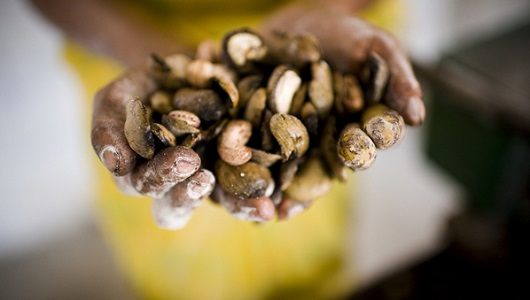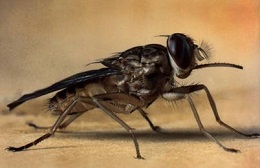Sleeping sickness prevention in a nutshell

Scottish scientific expertise has helped to develop a potentially transformative new method of tackling African sleeping sickness, a parasitic disease which poses a risk to over 70 million people in sub-Saharan Africa.
An international team including University of St Andrews chemist Professor David Cole-Hamilton has developed a new technique for luring tsetse flies into insecticide-impregnated traps, using a cheap by-product from the cashew nut industry.
The discovery may mean the development of much more cost-effective ways of attracting and trapping the flies which carry the parasite responsible for sleeping sickness, also known as African trypanosomiasis.

Tsetse Fly
In its early stages the disease causes fever, itching and joint pains, but left untreated progresses to significant illness involving neurological deficits, confusion and difficulty sleeping. In 2012 WHO estimated there were 30,000 people currently infected and up to 70 million across 36 countries at potential risk.
Until now, traditional odour attractants used to entice the tsetse flies into traps have been prohibitively expensive and not widely available in large quantities.
Bringing together ideas from Dar es Salaam, Tanzania, Professor Cole-Hamilton’s lab in St Andrews and Kaiserslautern, Germany Sabrina Baader of the research team found a way to synthesise attractant chemicals – 3-ethylphenol and 3-propylphenol -from readily available cashew nut oil.
Cashew nut production is widespread in sub-Saharan Africa and realises over 300,000 tonnes of waste product every year. The liquid contains the chemical cardanol, which can be used to make both 3-propylphenol and 3-ethylphenol. The resulting attractant can be coated on a large plastic sheet or similar surface, along with an ordinary insecticide. The tsetse flies are attracted to the sheet, where they are quickly poisoned.
By synthesising the attractants from a cheap material, the new method may allow African communities to produce their own attractant chemicals locally. The research team deliberately targeted waste products from food or other production processes for their source material to avoid using farmland and effectively forcing food production to compete with insect control.
The new process is significantly less expensive than existing methods which use synthetic compounds. A potential limitation of the approach however is that it relies on small quantities of a comparatively expensive Palladium-based catalyst.
While the cost of the catalyst may be beyond the reach of the individual, Professor Cole-Hamilton believes there may be a solution to this challenge:
“A whole village might be able to buy them collectively particularly if there were a government or international subsidy,” he said.
“What’s more, one other product from the process the team has developed is 1-octene, a chemical used to plasticise polythene. World demand for 1-octene is 600,000 tonnes a year and it sells at US$2 per kilogram so the profit from this product could be used to reduce the cost of the attractant.”
The research team comprised chemists from Scotland and Germany. Their new method of synthesising the attractant chemicals is published in Green Chemistry.
The School of Chemistry at St Andrews was recently ranked one of the leading centres for research in the United Kingdom. 95% of its research was judged to be world-leading or internationally excellent by the Research Excellence Framework 2014.
ENDS
NOTES TO NEWS EDITORS
The research paper is available to view at: http://pubs.rsc.org/en/Content/ArticleLanding/2014/GC/C4GC01269K#!divAbstract
For background information on sleeping sickness see: http://www.who.int/mediacentre/factsheets/fs259/en/
Issued by the University of St Andrews Communications Office, contactable on 01334 462108 or on [email protected].
Category Research